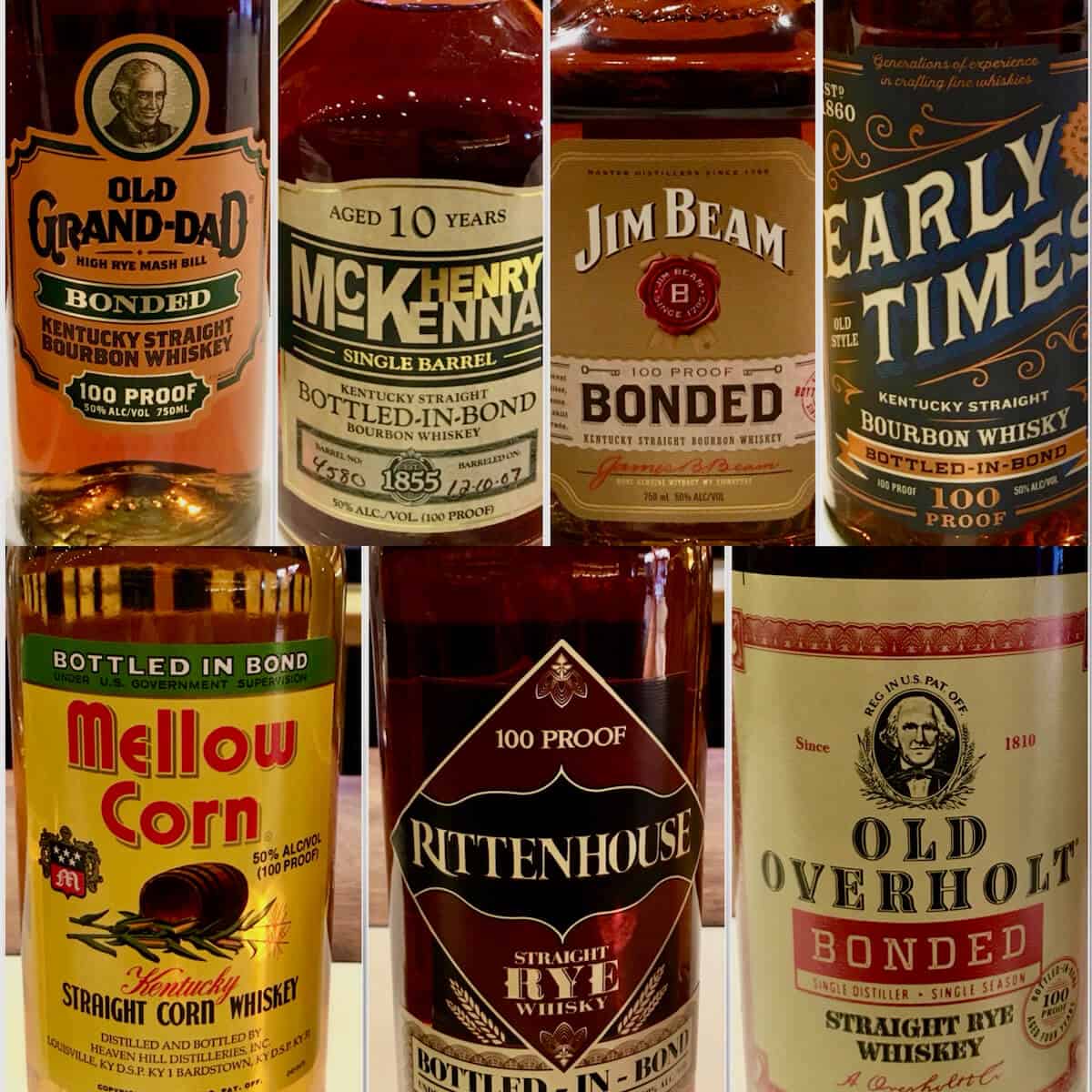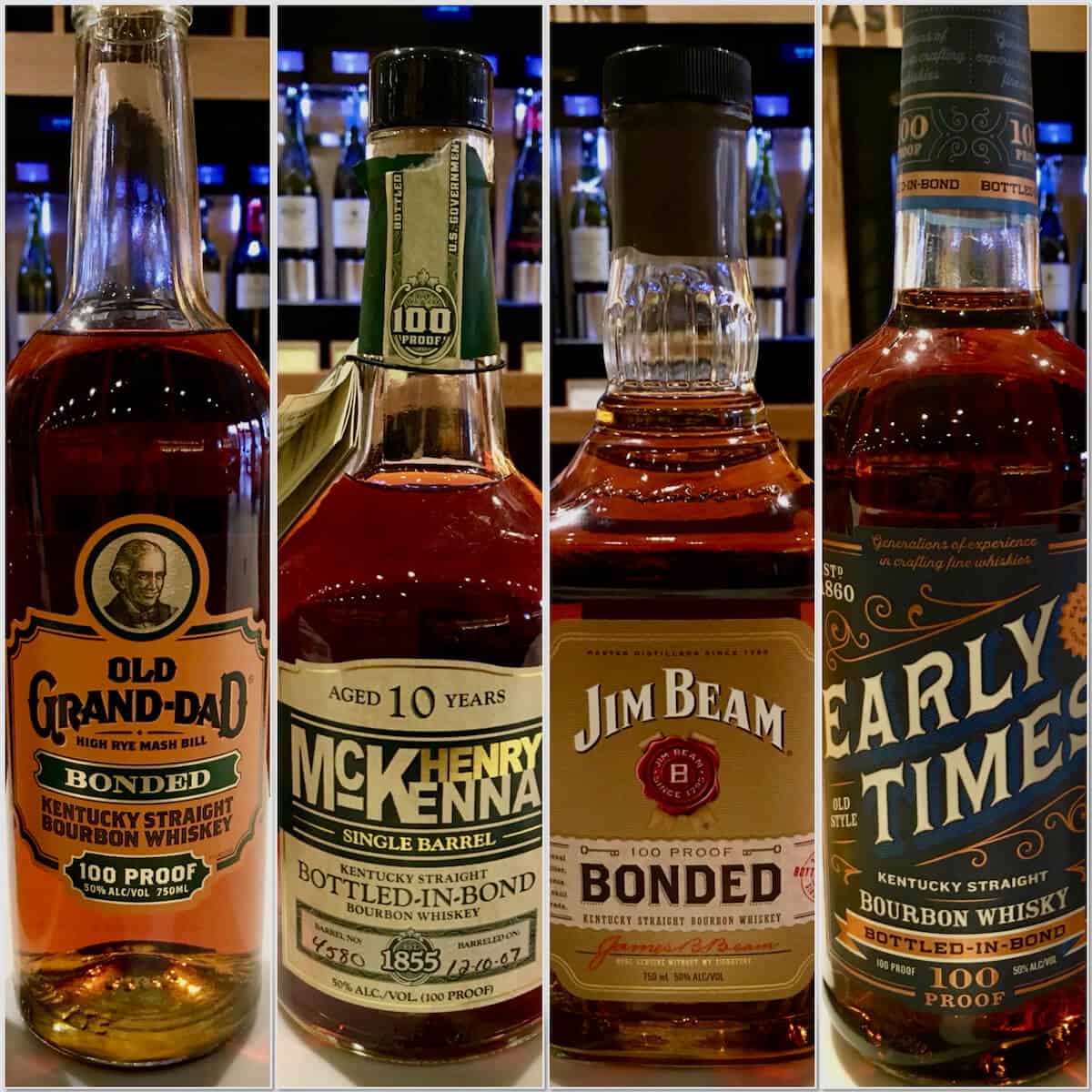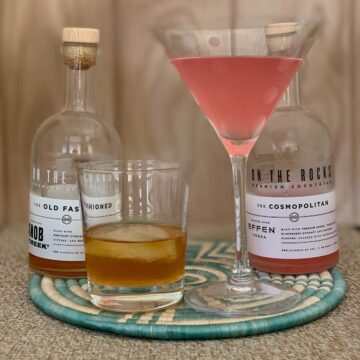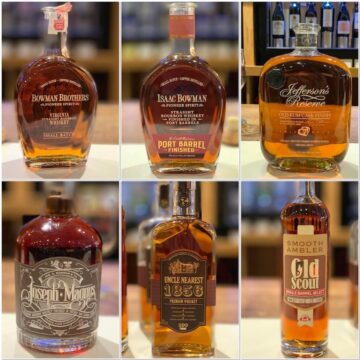What does "bottled in bond" or "bonded" bourbon mean? Let's find out the meaning of and reasons for those terms on a bourbon label while tasting some exceptional examples!

I'm a History nerd.
Why things are the way they are now are largely affected by what happened in the past and how people reacted to those circumstances.
Growing up in the (largely bland) suburbs of Los Angeles, the only recognizable historical buildings were the Spanish missions that run up the state. But there are subtle bits of history that effect how the city has developed.
For example, in 1933 there was a big earthquake in Long Beach (a city just south of LA). So many brick buildings collapsed, so now there are construction codes that restrict the use of brick.
When I moved to Boston I was amazed at all the brick buildings. They seemed so majestic and historic!.
The labels bottled in bond bourbon or bonded bourbon also reflect how a reaction to a situation still affects us today.
Ready for a little history lesson? Good! Buckle your seat belts…here we go!
Bottled in bond definition
In the late 1800s there was no quality control on spirits, and some distilleries took advantage in the name of profits.
They would mix harsh, un-aged bourbon with all sorts of unpleasant adulterants to improve the flavor and color of their whiskey. This practice reduced production time and costs, giving these distilleries an advantage over proper bourbon distillers.
And consumers, well, they couldn’t be sure of what they were drinking.
The legitimate distillers lobbied Congress to identify standards for bourbon, and the Bottled-in-Bond Act of 1897 was passed, giving consumers government assurances of quality and leveling the playing field for all the distillers.
Here’s what the law stipulated:
- The US government is in charge of the quality of whisky
- To have the “bottled in bond” or “bonded” on the label, the bourbon must be…
- …distilled at a single distiller during a single distilling season. There are 2 recognized distilling seasons, Spring: Jan 1 – Jun 30 and Fall: Jul 1 – Dec 31
- …matured for a minimum of 4 years in a federally bonded warehouse
- …bottled at minimum 50%ABV (100 proof)
The distillers agreed to these terms, in return for deferred the payment of excise taxes on the maturing the whiskey until it was removed from a bonded warehouse for bottling. A bonded warehouse was where a distiller posts bond guaranteeing taxes will be paid when the whiskey was bottled.
In addition, the label on the bottle must name the specific distillery where the whiskey was made. We see this now as the DSP# or Distilled Spirits Plant permit #.
Is bottled in bond relevant today?
So what’s the benefit of the law today? Surely distillers won’t go back to adding yucky stuff to their whiskey to undercut their competition?
No, today the “bottled in bond” mark is an assurance of consistent quality at a good price, an indication of the distiller’s skill, as it were. It's similar to the concepts of single malt whisky or small batch whisky.
The craft spirits industry is embracing the labeling as a made here, bottled here sign for the consumer to distinguish themselves from blends.
Ok, enough with the history lesson…let’s talk about the bourbons!
Gordons DTX held a tasting featuring all bottled in bond bourbons. Some of the expressions I had heard of, others I hadn’t, and I hadn’t tried any of them before.
It was a surprise and a delight.

Bottled in Bond Bourbons
Gordon's DTX, June, 6, 2018
Old Grand-Dad Bonded Kentucky Straight Bourbon Whiskey
Tasting Notes
- Nose: light brown sugar, vanilla, almonds
- Taste: thick body, sweet caramel candy, nutty, caraway, chewy, cinnamon heat
- Finish: fades to baking spices and brown sugar
- Comments: not rye dominant, sippable and sweet
Henry McKenna
Tasting Notes
- Nose: spicy, cream, walnut fudge, light cinnamon
- Taste: thick, walnuts, caramels, molasses
- Finish: mocha, caramel, lingering cloves
- Comments: really good! Lots of flavor, darker flavor than most bourbon
Jim Beam Bonded
Tasting Notes
- Nose: Rye nuttiness, hay, vanilla fudge
- Taste: Medium body, light cinnamon and cloves, caraway and cardamom
- Finish: Caramel, caraway, fades quickly
Comments
Early Times Bourbon Whiskey
Tasting Notes
- Nose: sweet corn, honey, vanilla
- Taste: thick, corn sugar, oak, caramel
- Finish: nutmeg,caramel, fades far
- Comments: from Ken Gordon’s collection (not available anymore), really sweet, very good

Mellow Corn
Tasting Notes
- Nose: corn, corn, corn! Light vanilla,
- Taste: light body, sugar, sugar, sugar
- Finish: fades quickly
- Comments: one note, like drinking an ear of corn, needs to be tamed in a cocktail
Rittenhouse Rye Bottle-In-Bond
Tasting Notes
- Nose: rye hits hard
- Taste: thick, oily, almonds, caramel, cinnamon
- Finish: spice fades to baking spices, light apricots
- Comments: the finish really makes it good as it coats the tongue
Old Overholt Straight Rye
Tasting Notes
- Nose: mild nose, light vanilla fudge
- Taste: enters soft, white pepper and cinnamon,
- Finish: fades to caraway
- Comments: it’s quite good

Final thoughts
It’s interesting to realize that much of what we take for granted now (proper building codes, clean and unadulterated food and water) needed to be legislated, and for the most part I’m glad for that.
Knowing what “bottled in bond” means not only informs me that the expression will be held to certain standards, but also tells me the distiller took the time to care about those standards.
And that is a mark of quality to me!







Let's Talk